With a mix of spectacular yet heavily-touristed temples plus offbeat, tourist-free temples, Luang Prabang offers a great package of religious architectural experiences. Whether you're into seeing the shimmering temples you've glimpsed in tourist brochures or simply want to chill out under a frangipani tree, watching the monks go about their daily routines in a secluded spot, Luang Prabang has it all. Here's a selection of our favourites.
By far the most popular temple in town is called Wat Xieng Thong. Located at the far end of the peninsula, visitors arrive here by the bus load in peak times and much of the magic of the place is lost in the sea of other tourists.
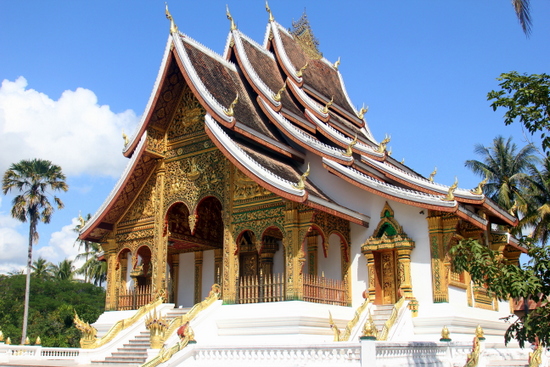
Get in early for the top shelf attractions.
For the best experience, arrive in the early morning or towards the end of the day, when you'll have more of the temple grounds to yourself and you won't be constantly walking in front of people's photos of the beautiful things here, such as the glass mosaic tree or revered reclining Buddha. It's a sprawling complex with quite a few different points of interest, so this is one temple that demands a decent amount of time to explore. A relatively hefty 20,000 kip fee is charged upon entry.
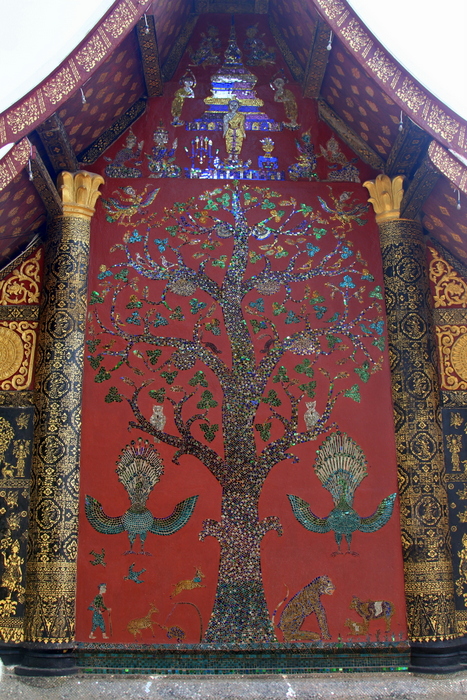
Glam peacocks.
Down in the south of town behind Phou Si Mountain are Wat Wisunalat and Wat Aham, worth swinging by primarily due to their being less crowded, but also due to the watermelon-shaped stupa in front of one of the temples. Known as That Pathum (Stupa of the Great Lotus), it is totally different in style to anything else in Luang Prabang and although it could do with a good scrub, is picturesque in its own unique way. The main attraction of Wat Aham is its peaceful grounds, the odd monk hanging out washing and some fine murals on the walls and ceilings of the main sim depicting some hellish scenes.
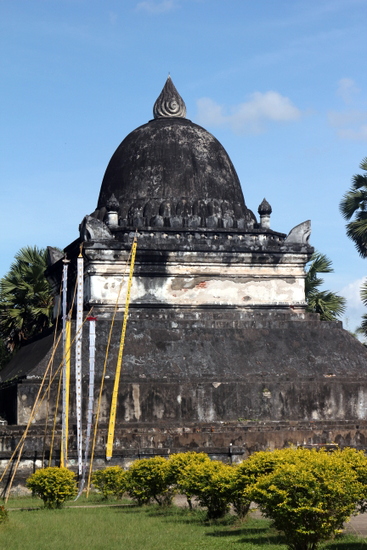
We've never seen a watermelon like it.
The largest wat in Luang Prabang is the centrally located Wat Mai. Due to its location, it's quite heavily touristed and again an early morning visit is a great option if you want to avoid appearing in other people's photos. You'll also get a better appreciation of how local people interact with the wat during the early morning, as later in the day it's primarily used just as a tourist attraction. The highlight here is the incredible multi-tiered roof of the sim which starts with a soft slope on the lower tiers and climaxes at the top with an almost vertical pitch. Along with this highlight, also look out for the spectacular bas relief depicting stories of the Ramayana and Buddha's early life.
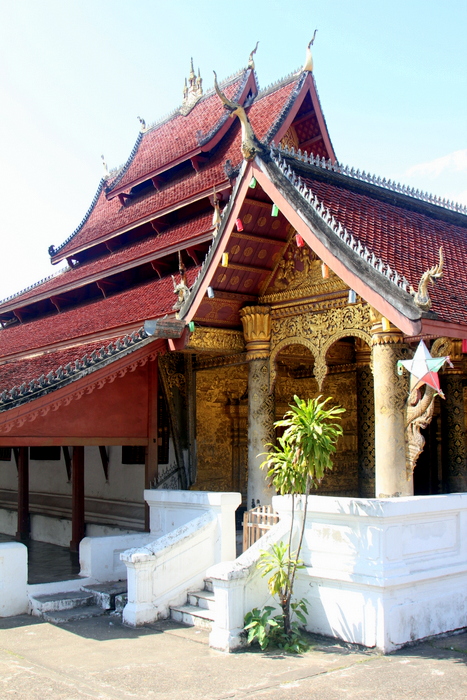
This is not peak hour.
A good add-on to a temple visit is wonderfully French Le Cafe Ban Vat Sene. A good time to visit is for breakfast when Luang Prabang temple hopping is yet to reach a frantic pace. Take a seat on the footpath, order a coffee, a baguette and a selection of house-made preserves and relax into the day ahead. After getting your fill at the cafe, walk across the road to Wat Sene, a Thai-style wat built in the 18th century and renovated a few times since. If you're out the front early enough, it's even possible to catch a low-key alms ceremony with nary another tourist in sight.
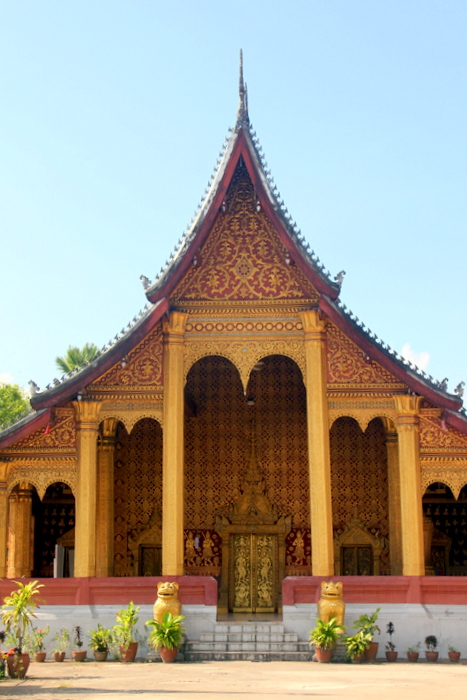
Reaching for heaven.
For something a little more offbeat, the temples across the other side of the Mekong are well worth checking out. As well as being quieter than their Luang Prabang cousins, they can be much more atmospheric due to their more rural surroundings. On top of the hill is Wat Chompet, which is slightly busted, but boasts great views across the river back to Luang Prabang. A couple of oddly tilting stupas add a quirky feel to the place and it's certainly a temple for those looking for something outside the norm.
Further to east is Wat Tham Xieng Men, an abandoned cave temple reminiscent of an Indiana Jones movie with its carved stone entrance surrounding the cave opening and iron fence keeping looters at bay. To take a look inside, ask one of the local children hanging around if they will take you in; bring a torch, although the children are usually well-prepared for tourists and will lend you one for a fee. Inside you'll find loads of half destroyed Buddhas and perhaps not a single other tourist. Entry is 10,000 kip, although this is not always collected.
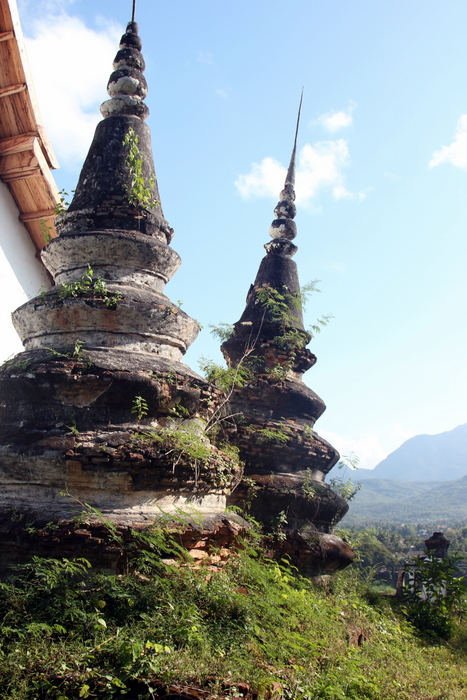
Wobbly but wonderful.
While Luang Prabang is quite a compact town and old city is eminently walkable, visiting the full range of temples by foot is a big ask. A great way to see all of these temples and some others just outside of the main tourist area, we recommend hiring a bicycle for about 20,000 kip. Most of Luang Prabang is flat and even the dirt trails across in Chompet can be ridden on the basic bicycles for rent in town with a little walking in some of the hillier sections.